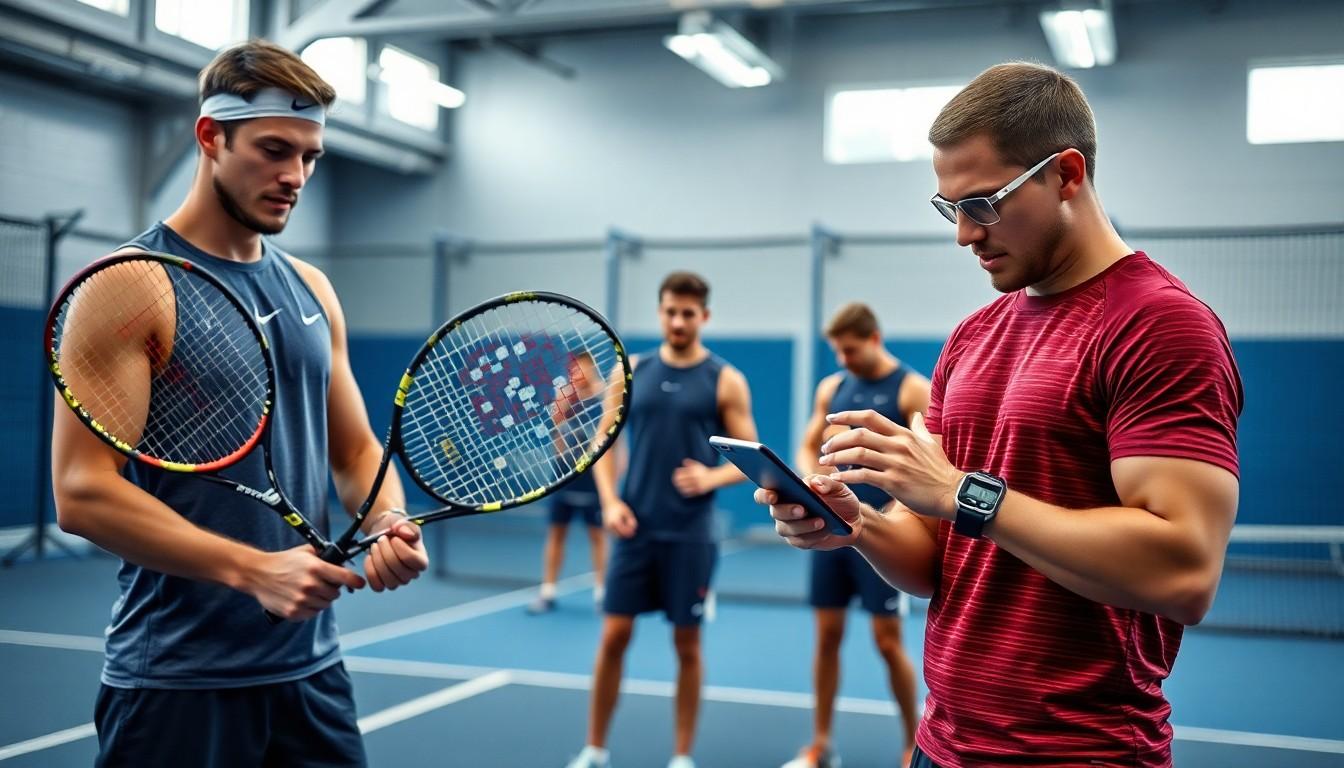In a world where athletes push their limits, sports tech is the secret sauce that takes performance to the next level. Imagine a wearable device that not only tracks heart rates but also gives real-time advice on how to avoid that post-game pizza binge. It’s not just about breaking records anymore; it’s about breaking barriers with the help of cutting-edge technology.
Sports Tech
Sports technology transforms how athletes train, recover, and compete. Innovations in wearable devices enable athletes to track metrics like heart rates, sleep patterns, and physical activity levels. Real-time data analysis empowers individuals to make informed decisions that enhance their performance.
Advancements in sports tech include smart fabrics and sensor-based equipment, offering insights into biomechanics and movement efficiency. These tools foster a deeper understanding of an athlete’s body, contributing to the optimization of training regimens. Performance analytics platforms collect data from training sessions, providing critical feedback on areas for improvement.
Moreover, virtual reality applications immerse athletes in realistic environments, enhancing their skills and strategies in a controlled setting. Coaches utilize video analysis software to dissect plays, identify mistakes, and develop tactical approaches. This data-driven strategy enhances overall team dynamics and individual capabilities.
In addition, nutrition tracking apps inform athletes about their dietary choices. These applications support the goal of maintaining optimal energy levels for training and competition. Gamification elements in various platforms motivate athletes to engage with their training plans, promoting a healthier lifestyle.
Overall, sports technology plays a vital role in the modern athletic landscape. Progression through this sector illustrates a commitment to maximizing human potential while pushing the boundaries of performance. As technology continues to evolve, its integration into athletic training and competition will likely deepen, yielding significant benefits for athletes at all levels.
Latest Innovations in Sports Tech
Recent advancements in sports technology continue to revolutionize how athletes train, compete, and recover. Two key areas of innovation are wearable technology and smart equipment.
Wearable Technology
Wearable devices play a crucial role in monitoring athletes’ physiological metrics. These devices track heart rates, sleep patterns, and hydration levels. Athletes use this data to optimize training and recovery routines. Real-time analysis enables users to make informed decisions, like adjusting hydration before an event. Brands like WHOOP and Fitbit offer comprehensive insights into performance, empowering users to reach peak condition. Enhanced connectivity features allow athletes to share data with coaches, fostering better collaboration during training sessions. Overall, wearables promote accountability and informed decision-making in athletic practices.
Smart Equipment
Smart equipment represents a significant leap forward in training effectiveness. For instance, sensor-embedded balls and smart racquets provide performance analytics through pressure and motion data. Athletes receive feedback on technique and shot accuracy, crucial for skill enhancement. Furthermore, adjustable resistance machines adapt to users’ strength levels during workouts, ensuring optimal challenges. Notable examples from brands like ShotTracker and Zepp demonstrate how technology can improve performance across various sports. Integration with mobile apps allows for personalized training plans, enhancing user experience and results. Smart equipment thus bridges the gap between traditional training and technological advancement.
Impact of Sports Tech on Performance
Sports technology significantly transforms how athletes enhance their capabilities. From data analytics to injury prevention, advancements create a more effective training environment.
Data Analytics in Sports
Data analytics provides critical insights into athletic performance. Performance metrics help athletes identify strengths and weaknesses. Coaches analyze this data to refine strategies during training and competition. Enhanced performance analytics platforms refine techniques based on historical data. They track physiological metrics, including heart rates and sleep patterns. Analytics also allow real-time adjustments to training regimens, maximizing output. By utilizing tailored performance data, athletes can focus on areas needing improvement.
Injury Prevention and Recovery
Injury prevention enhances athlete longevity. Smart technology assists in monitoring biomechanics to identify potential risks. Wearable devices track stress levels on muscles and joints, aiding in injury prediction. Recovery solutions include innovative methodologies such as cryotherapy and hydrotherapy. These technologies expedite healing processes and improve overall recovery times. Data-driven approaches ensure athletes follow optimal recovery protocols. Implementing these strategies leads to reduced injury rates and improved performance longevity. Athletes can return to training sooner, maintaining peak physical condition.
Future Trends in Sports Tech
Innovations in sports technology continue shaping the future of athletics. Embracing exciting advancements enhances training, competition, and recovery experiences.
Virtual and Augmented Reality
Virtual reality (VR) and augmented reality (AR) have become integral to athlete training. These technologies create immersive environments that simulate real-game scenarios, providing practical experience without the physical pressure of competition. Coaches utilize VR for strategy and situational training, allowing athletes to practice decision-making skills effectively. AR applications enable instant feedback during drills, highlighting areas for improvement. Athletes can visualize strategies and game plans directly in their environment. Enhanced engagement fosters better retention and understanding of techniques, ultimately leading to improved performance outcomes.
Artificial Intelligence in Sports
Artificial intelligence (AI) transforms data analysis in sports performance. Advanced algorithms process vast amounts of data from wearables, enabling precise tracking of an athlete’s progress. Coaches gain insights into player performance, identifying patterns and optimizing training regimes. Predictive analytics assess injury risks, allowing for preventive measures tailored to individual needs. Fans also benefit from AI through personalized content delivery and enhanced viewing experiences. Athletes can receive real-time feedback, facilitating immediate adjustments during practice or competition. AI’s integration into sports illustrates a commitment to maximizing performance while minimizing risks associated with injuries.
The integration of sports technology is reshaping the landscape of athletic performance. With wearable devices and smart equipment at the forefront athletes are now equipped to push their limits while minimizing risks. The focus on data analytics and innovative training methods not only enhances performance but also promotes longevity in sports careers.
As advancements like virtual reality and artificial intelligence continue to emerge the future of sports tech looks promising. These innovations are set to redefine training and recovery processes making it easier for athletes to achieve their goals. The ongoing evolution of technology in sports underscores a commitment to maximizing human potential and enhancing the overall athletic experience.


